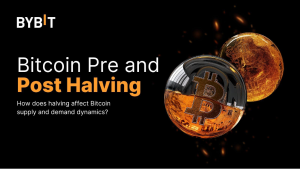IBs from across the world looking to become brokers in America. No competition means massive opportunity
Chinese IBs could easily afford to set up as a domestic brokerage in the US, and so could many NFA regulated IBs. This week, the revival of the US retail FX industry is in full swing

Ever since the industry-changing ruling by the Commodity Futures Trading Commission (CFTC) last week in which FXCM, one of the world’s largest and most widely recognized retail FX brokerages, was banned from operating in the United States along with its two senior directors, CEO Drew Niv and Managing Director William Ahdout for trading against its customers for several years whilst purporting to operate an agency execution model.
The removal of FXCM from is very own domestic heartlands has resulted in just two retail OTC FX firms to choose from for most retail customers, those being GAIN Capital, which this week acquired FXCM’s US client base for what FinanceFeeds considers to be pretty much absolutely nothing, and OANDA Corporation, which immediately pounced on the opportunity to attempt to attract FXCM clients by engaging in what can only be considered to be a very tasteless cheap shot by issuing a gloating press release.
As a result, the most highly organized, well regulated and sustainable electronic trading market in the world is left with not much choice of brokerage, yet plenty of astute investors, with the average deposit size in the US being $6600 rather than $3800 in the rest of the world, a much longer customer lifetime value, and a range of retail traders who are loyal, highly financially literate and often have investment portfolios which are designed for long term rewards.
During the past few days, it has become apparent to FinanceFeeds that, in the true form of the extremely rapidly developing dynamic of the electronic trading industry which morphs within a very short time to suit current commercial conditions and circumstances, many introducing brokers around the world are now actively investigating the possibility of establishing a retail FX brokerage in North America.
As the previous decade drew to a close, many retail FX firms with their origins outside of the United States began to weigh up the viability of retaining business here.
The result was a wave of exits from the United States at the turn of this decade by major firms including Alpari, FXSolutions, GFT, IBFX, and ILQ to name a few, as well as vast consolidation with FXCM having bought the client bases of various firms, and GAIN Capital acquiring GFT, meaning that in the space of just three years between 2010 and 2013, the approximately 25 retail OTC FX firms that had operated in America became nine.
Now, it is quite simply dominated by just two domestic companies.
Five years ago, much clamor amassed and it was relatively common to hear conversations by industry executives outside North America as well as those on the retail sales side such as introducing brokers beginning to hail America’s FX business as a dead man walking.
How wrong could this be….
When examining the companies that took the option of leaving the US market post-Dodd Frank Act, they mostly no longer exist anywhere globally. ILQ left the US market with the NFA having administered a $225000 fine and a permanent ban from operating in the Federal United States in July 2014.
One of the main factors which prompted the NFA to probe into the commercial activities of ILQ at the time was that the regulator had serious concerns relating to the corporate structure of the company, as well as the NFA having conducted investigations into the provenance and business activities of a number of the company’s key figures, including the assertion that at the time that the NFA’s investigation began in March 2013, ILQ had approximately 1,300 customer accounts and over $13 million in total customer liabilities.
Nowadays, the firm has a small operation in Australia but is living in the shadows of Invast Global or AxiTrader, both of which have branched into Prime of Prime brokerage, as well as embarked on large scale commercial growth endeavors.
IBFX was banned from the US market in March 2016. The company, which is owned by Japanese giant MONEX Group, was fined $1 million by the CFTC a day before its ban, and OANDA Corporation then acquired its client base that were using the proprietary Tradestation platform – around 2200 traders – and migrated them to OANDA’s fxTrade system.
Previously, IBFX was fined $600,000 as a result of the NFA having found that IBFX used two models to execute its retail FX transactions. One was STP, and the other being a practice known as warehousing.
Warehousing occured whereby IBFX acted as the counterparty for trades whose value was less than the notional volume threshold level lnterbank had established for STP trades. Interbank would aggregate the “warehoused” trades for risk management purposes and earn revenue from the bid/ask spread and from beneficial market moves that the aggregated “warehoused” trades experienced.
For the vast majority of trades, IBFX would warehouse the trades, and for the remainder of trades, IBFX used the STP model, which accounted for a very small percentage of the firm’s trading volume and applied when the contract size was at or over the specific notional volume threshold set by the firm for its warehouse trades.
Under the STP model, after a customer clicked on the bid or offer price, which included lnterbank’s predefined markup, IBFX would fill the customer’s order but only after the firm had filled the offsetting position (contra-fill) with a liquidity provider.
Less than two years later, IBFX sold its MetaTrader 4 client base to FXCM for $4.4 million, before this year leaving the US altogether.
Strength and business ethic in the land of the free
Capitalization and execution are cornerstones of the American FX industry’s pedigree and quite simply, time has shown that those that cannot cut it in America, have been unable to do so throughout their business operations anywhere globally.
It was convenient to blame the inability to operate on over zealous regulation, or a net capital adequacy requirement of $20 million, however the US giants that remain do not find this difficult at all. Even FXCM, which was exposed to a vast and unexpected surge of volatility when the Swiss National Bank removed the 1.20 peg on the EUR CHF pair in January 2015, was not called up on its execution methodology, commercial leadership or capitalization.
Meeting with CEO Drew Niv a year ago in New York, FinanceFeeds gained perspective on this, with Mr. Niv explaining ““If you look at FXCM today, it is effectively the same company as prior to January 15 2015. Most of our customers stayed, almost all of the staff stayed. We did sell some non-core assets and for a few months we had some losses, however we kept the market share in tact. What many people don’t realize is that we effectively plugged the capital shortfall with Leucadia’s loan.”
In terms of actual impact on the business as a result of attrition, Mr. Niv explained “The customers that we lost were mainly some of the large customers. The total number of our clients that were actually affected by the market volatility that followed the SNB’s decision approximately 3,000 customers which comprised of around 200 here in the United States, and the rest were overseas.
This is a small amount, especially when bearing in mind that some were inactive customers. There were also some customers which stayed with FXCM but deposited less funds because, for example, they were happy to continue trading but would prefer to hold $50,000 in the company rather than $1 million.”
It is now over for FXCM, in all global markets. Just this week, Drew Niv and Brandon Mulvihill were struck off as directors of the British division of the firm, and its global reputation is in tatters.
This has created a massive gulf between introducing brokers, many of whom across the world provided vast business to FXCM, not only in the domestic market, but also from mainland China, where FXCM has been a massive force across the second tier development towns with large IB networks for several years.
From Shenzhen to Zhengzhou, FXCM dominated, being the darling of the introducing brokers and portfolio managers that have over $300 million in assets under management, trading via MAM accounts the liquid capital of property investors with tens of millions locked up in illiquid real estate, who want to trade liquid spot FX with the several hundred thousand dollars of secure monthly revenues.
These IBs could very easily stump up $20 million in regulatory capital, and become NFA members, with an office in the United States and full regulatory reporting systems and personnel in place.
$20 million to a Chinese IB with a large client portfolio and 100 staff is a drop in the ocean, and in a nation in which trust is all, the Chinese IBs could have their very own US based brokerage and send client capital to it without concern. To demonstrate how small the cost of becoming a brokerage is requires a visit to a few second tier Chinese towns where modest, extremely astute IBs meet with brokers and explan that they would need to test the system when forging a new relationship. It is quite common to be asked by a broker as to how much the Chinese IB would like to deposit to test the system. The answer, in many cases is “About $250.” This means $250 million!
The key here is that America’s commercial structure is highly refined. Its leaders are career professionals who have enthusiasm for continuing to further the cause of what is, even at retail level, a massively institutionalized business.
This provides an opportunity for many US based NFA regulated IBs to also evolve toward becoming a brokerage in their own right. Many prime brokerages have this week received serious enquiries from IBs in America about taking a price feed, as the interest from American IBs in becoming a brokerage grows rapidly.
When interacting with America’s senior level FX industry professionals on both the exchange traded FX side and the OTC side, it is clear that the surge forward technologically and commercially today is in full swing.
Now let’s see if Donald Trump’s plan to repeal the Dodd Frank Act materializes. If it does, it will clear the way in some respects, but due to the extremely self-regulating and comprehensive knowledge and professionalism among US market participants, the structure will remain among the highest in the world.
FinanceFeeds would very much like to see a revival of the North American retail FX industry by worthy companies at this opportune time.









